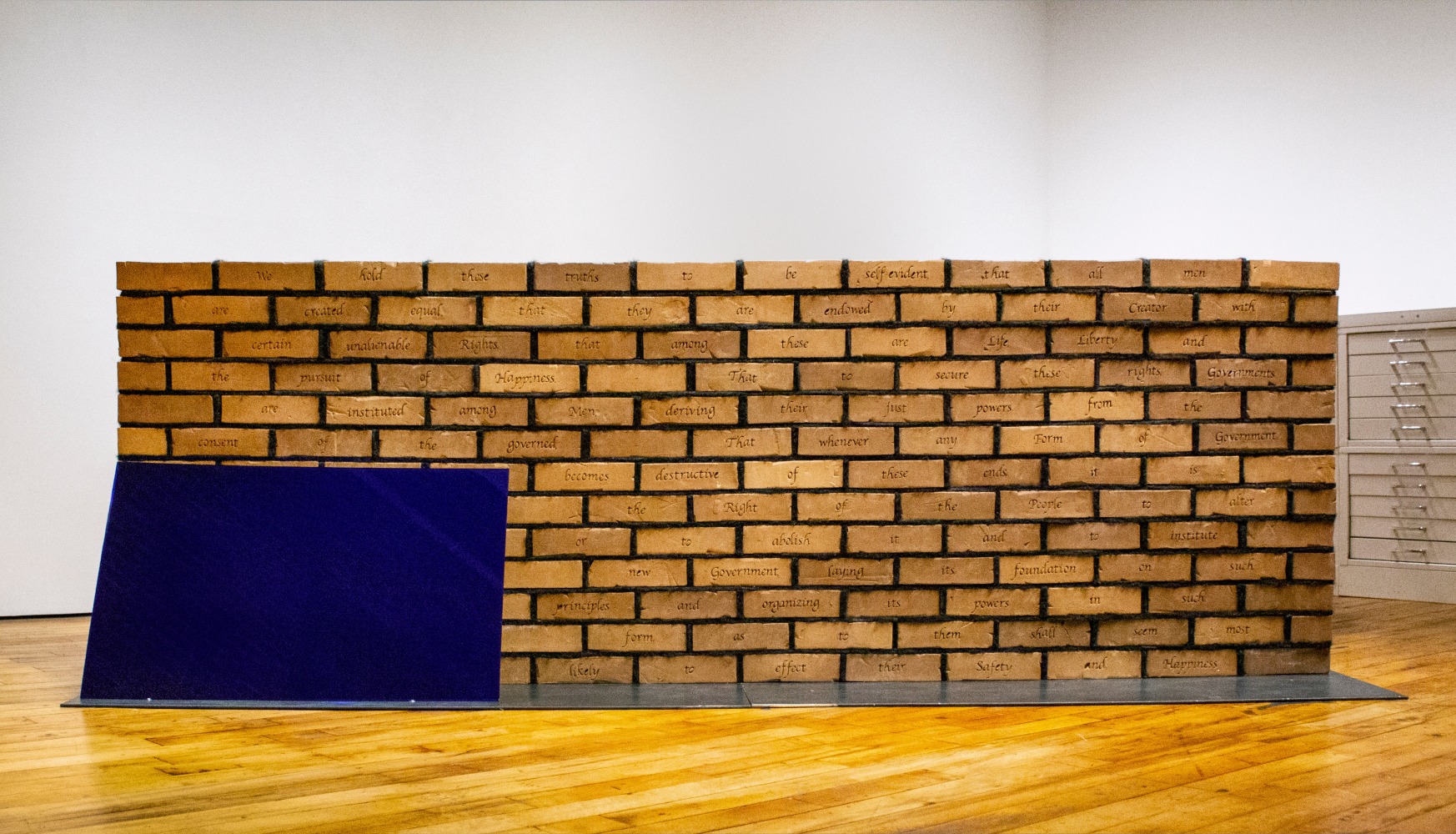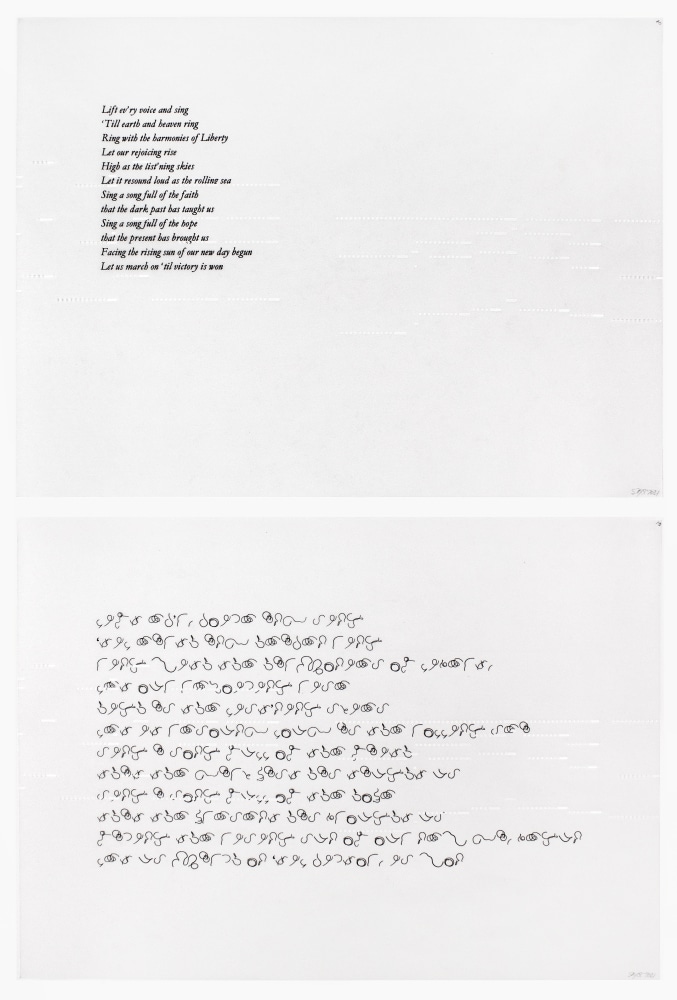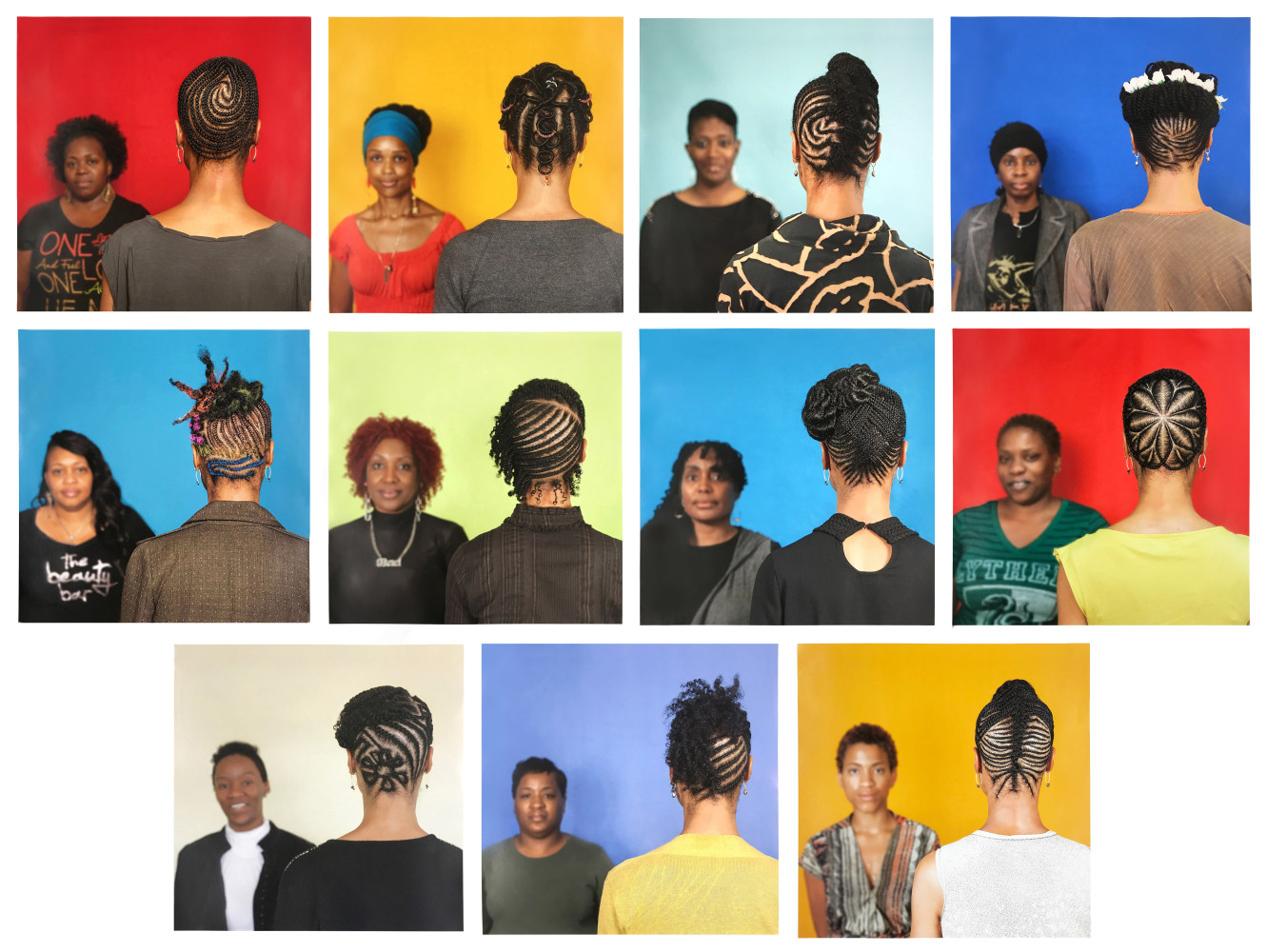
Edifice and Mortar, 2018
Hand stamped bricks, human hair, glass, steel base
39 x 72 x 15 in. (99.1 x 182.9 x 38.1 cm)
Clar-1034-C-OS
Sonya Clark describes Edifice and Mortar as a wall, a flag, and a document that asks us to consider a fundamental question: who laid the foundations of the United States of America?
Each brick is hand-stamped with a traditional maker’s mark and a word. Together the recto forms an excerpt from the Declaration of Independence. The lines of text are interspersed with mortar made from African American hair gathered from Richmond salons—the hair of people whose ancestors might have been legally enslaved and whose life, liberty, and the pursuit of happiness were cut out of Jefferson’s 1776 Declaration. The viscerally charged pointing is meant to represent “black people who are at once held under the weight of the system, but who are also holding this country together.”
The brick stamps display the word Schiavo, which is the origin of the commonly used Italian greeting Ciao. Translated into English, the word Schiavo means SLAVE.
The blue panel is intentionally placed at an angle to reflect the viewer, making each of us a part of the work.
Edifice and Mortar extends Clark’s ongoing material and conceptual reworking of icons of America’s racially divided past and present.

Lift Ev'ry Voice and Sing, 2021
Archival pigment print on perforated piano paper
Diptych, 11 1/4 x 15 in. (28.57 x 38.1 cm) each
Variable edition of 20
Clar-1038-C
"Lift Every Voice and Sing" – often referred to as “the Black national anthem” in the United States – is a hymn written in 1900 as a poem by James Weldon Johnson, and set to music by his brother, J. Rosamond Johnson, for the anniversary of President Abraham Lincoln's birthday. Within this diptych, Clark uses repurposed, perforated piano paper to present the first verse of the lyrics which reads:
“Lift every voice and sing
Till earth and heaven ring
Ring with the harmonies of Liberty
Let our rejoicing rise
High as the listening skies
Let it resound loud as the rolling sea
Sing a song full of the faith that the dark past has taught us
Sing a song full of the hope that the present has brought us
Facing the rising sun of our new day begun
Let us march on till victory is won.”
The second panel repeats the verse using Sonya Clark’s font, invented by the artist using her own hair to shape each letter. At the turn of the 20th century, Johnson's lyrics eloquently captured the solemn yet hopeful appeal for the liberty of Black Americans. Clarks work, like much of her work, redresses history while pointing to the inequalities of the present day.
Inquire
Hair Craft Project, 2014
Series of 11 pigment prints on archival paper
Paper size: 29 x 29 in. (73.7 x 73.7 cm) each
Image size: 26 x 26 in. (66 x 66 cm) each
Edition of 10
Clar-1048 - 1058-C



